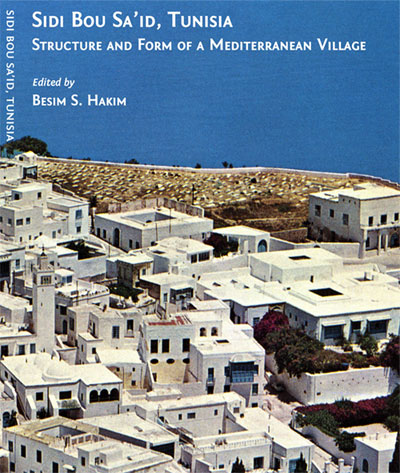Besim S. Hakim has recently published a new edition of the study of the village of Sidi Bou Sa'id in Tunisia, the project that began his career decrypting the processes underlying the emergent morphology of Mediterranean towns.
In light of the major developments complexity science has made in the decades since, the preface of the new edition puts things in their updated context.
This preface was written in January 2009, thirty-one years after the first publication of this book in 1978. I have decided to re-publish it now due to its importance as an example of a built environment that came into being due to a generative system that is based on a sustainable framework of decision-making characterized by a bottom-up approach and guided by overarching generative proscriptive codes. The emergent result is a dynamic complex built environment that is not the brainchild of a master planner or architect. The exact configurations and form of the built environment is not known during the process of its formation and has a characteristic of unpredictability. This is one of the main features in natural systems that are associated with the phenomenon of emergence. What is known is that the result would fit well and in full balance within its immediate surroundings and will be a contribution that would maintain the integrity and quality of the village as a whole. The process is a result of small acts that in aggregate produces built form that is compatible with its immediate neighbors and that contributes to the high quality of the village’s character. I have researched and published in recent years numerous studies that explain how such an underlying generative system works. - Besim S. Hakim.
This kind of study is essential if we are to reinvent an urbanism that is truly traditional in nature and complex enough to achieve modern sustainability.
Michael Mehaffy's review provides more context.
The subject of urban codes is now much-discussed in the fields of urban planning and architecture. But most codes are relatively static, specifying an end state to be achieved at one point in time. What Hakim describes here is a much more dynamic, rule-based process of shaping growth - more in line with the latest insights of complexity science about the growth of natural systems. It leads to the phenomenon of "emergence" - the appearance of unplanned and often unpredictable characteristics, that nonetheless have the characteristic of reinforcing and enriching what came before.
Hakim makes a comparison to the work of Christopher Alexander, who has focused on the way that settlements grow over time. Hakim notes a number of "patterns" that correspond to Alexander's "pattern language" -- a compendium of recurrent design solutions, together with the rules that govern how they go together, like the rules of grammar. Alexander argues that such patterned growth over time has produced the beautiful and complex places all around us, in contrast to our more "mechanical" methods today.
For Hakim, such places have achieved a form of sustainability that is well worth our study, since so many of them have, after all, "sustained" for centuries. The subject of urban sustainability is of course a much-discussed one, since buildings and urban environments are responsible for over one-third of the greenhouse gases that cause climate change, to say nothing of other ecological damage. But as many critics point out, sustainability is not just a bolt-on affair: it goes to the way people interact socially and economically, and the way, as Hakim points out, that small acts contribute (or don't) to the quality and durability of their surroundings, and the built environment as a whole.
If you are interested in the contrasting principles of traditional urbanism as opposed to traditional architecture in a modern planning system, this book can be your guide.
Sidi Bou Sa'id, Tunisia: Structure and Form of a Mediterranean Village
edited by Besim S. Hakim

Comments
Like your blog .Keep up with the good posts !